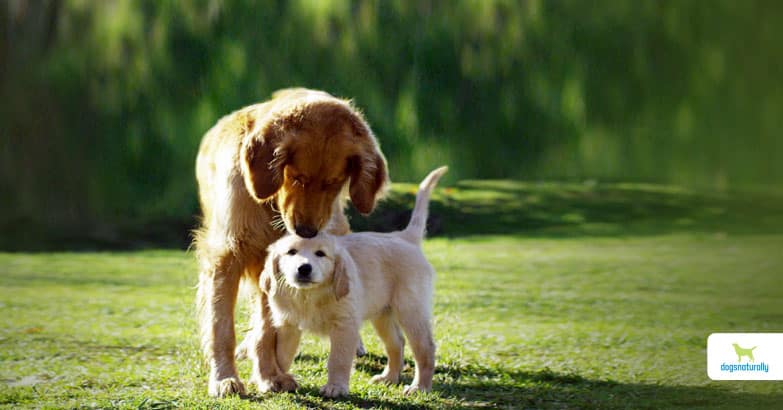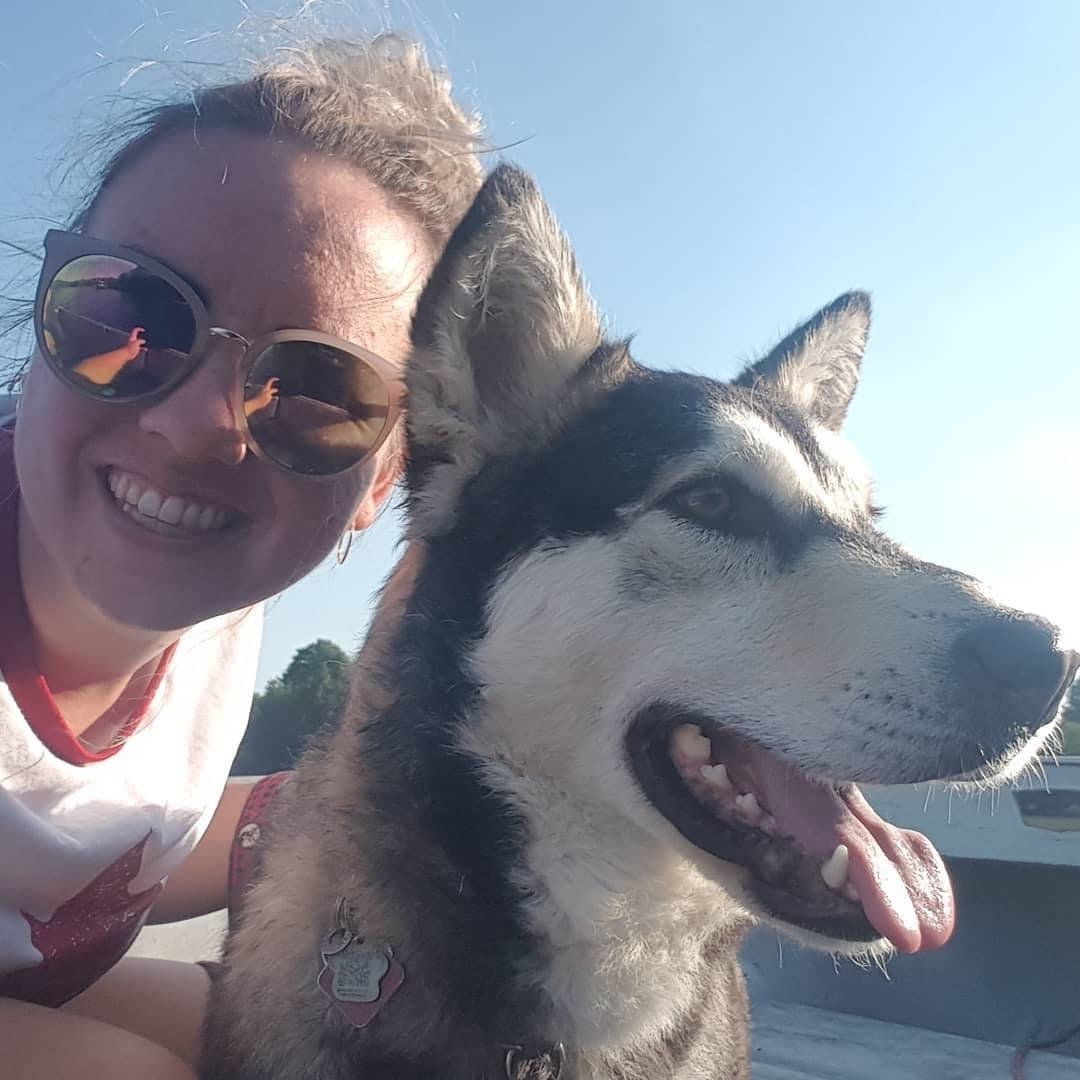Everyone loves puppies, but all dogs will grow, mature, and reach their full size at some point. The question is, when do dogs stop growing? And just how big will your dog get?
The short answer is that most dogs will stop growing between the ages of 6 to 18 months. However, this figure can obviously change depending on several factors, such as the breed of your dog and even his gender (male dogs typically outweigh females across all breeds).
With that in mind, here are a few helpful guidelines and rules of thumb to help you get a better idea of when your dog will stop growing and how big he will get. Let’s look specifically at large dogs first.
When Do Large Dogs Stop Growing?
A large dog breed (which is any breed that will weigh between 50 to 100 lbs as an adult) will typically stop growing anywhere between 10 to 18 months of age. Again, though, this is just a rule of thumb. Several very large or giant breeds, like mastiffs, may take up to 24 months to fully develop. Still, the vast majority of large dog breeds will reach their full height by the 16 month mark.
Common large breed dogs include:
- German Shepherds
- Labrador Retrievers
- Siberian Huskies
- Collies
- Dalmatians
When Do Small Dogs Stop Growing?
Small dog breeds will typically finish growing when they’re between 6 to 8 months of age. Medium breeds may take slightly longer, reaching their full size around 12 months. A small breed dog is any dog under 25 lbs when fully grown, while a medium breed ranges between 25 to 50 lbs when fully grown.
Common small breed dogs include:
- Dachshunds
- Maltese
- Yorkshire Terriers
- Toy Poodles
- Chihuahuas
Common medium breeds include:
- Beagles
- Basset Hounds
- Miniature Schnauzers
How Much Will a Dog Grow After 6 Months?
Your puppy’s most rapid growth and development will take place between birth and 6 months of age. But puppies will continue to put on weight and gain height until they reach their full adult size.
After 6 months, toy and small dog breeds will have almost completed their growth, but larger breeds will still be growing. A medium to large breed puppy may be around two-thirds of his full adult weight after 6 months. Meanwhile, giant breed puppies are likely to only be around half of their adult weight at this age.
Can You Tell How Big a Puppy Will Get?
There are a few different ways to estimate how big your puppy will get when she reaches adulthood Some methods, like looking at the size of your puppy’s paws, are essentially myths, and not very helpful in getting an accurate picture of your puppy’s future size. It’s more helpful to estimate how big your puppy will get based on its breed.
Dog breed standards are particularly helpful if your dog is purebred. If that’s the case, puppy weight calculators based on breed standards can also help you predict how big your puppy will get.
Estimating a mixed breed puppy’s adult size is a little more difficult. You may be able to get a clearer picture if you know your dog’s breeds and the size of his parents. If that’s not possible, the next best thing is usually just to use his suspected breed to make an estimate of his full size.
RELATED: How To Potty Train Your Puppy in 2 Easy Steps
Are Puppy Weight Calculators Accurate?
Speaking of puppy weight calculators … are these accurate, or should you be skeptical? It’s a subject of some debate. In general, it’s best to remember that these are imperfect tools designed to give you an estimate. There’s no “perfect formula” that will give you the exact future size of your dog. There are simply too many variables, including genetics, pedigree, gender, whether your dog has been spayed or neutered, etc.
RELATED: The negative effects of spaying and neutering
But that’s not to say puppy weight calculators are useless, either. As mentioned earlier, these tools can be especially helpful if your dog is purebred, as the more accurate calculators are based on dog breed standards.
In short, if your dog is purebred, you can expect a helpful estimate from puppy weight calculators. However, your dog may still end up slightly larger or smaller than these tools lead you to believe … which is perfectly fine, as long as he’s healthy.
How to Make Your Dog Grow Bigger
The best way to ensure your dogs grows up strong and healthy is to feed him a nutritious diet. But bigger isn’t always better when it comes to puppies, so make sure your puppy stays on the lean side because over-nutrition can lead to orthopedic problems like OCD (osteochondritis dissecans) or panosteitis.
You might have heard that high protein diets shouldn’t be fed to puppies, especially large breed puppies. But this has been disproven as a cause of joint disease, although excess calories can be a problem.
If you’re feeding your puppy a dry diet, look for foods that contain at least 26% protein. If you’re feeding your puppy a raw diet (and we certainly recommend that you do), then look for a food that has at least 14% protein and no more than 10% fat, as fed. A good quality commercial raw diet will give your puppy a healthy head start.
Lastly, giving your dog plenty of short bouts of exercise combined with a healthy amount of rest. This will help him grow to his full size, while keeping him from becoming overweight.
RELATED: Switching Your Puppy To A Raw Diet
Why Isn’t My Dog Growing or Gaining Weight?
The most common reasons puppies don’t grow to their full size are intestinal parasites like hookworms and roundworms. These parasites are extremely common in puppies in the United States, and your puppy can contract them from his mother or from his environment.
If you’re concerned your puppy may have parasites, a vet can run simple tests to diagnose them. However, be aware that they may recommend toxic drugs for your dog. There are natural solutions for worms and feeding your puppy a healthy, well-rounded raw diet can also help prevent worms naturally.
RELATED: How to get rid of worms in dogs
Bottom Line
So when do dogs stop growing?… Figuring out when your dog will stop growing largely comes down to estimating his future size based on his breed. For purebred dogs, puppy weight calculators can help you arrive at a somewhat accurate figure for how big your puppy will get.
The best thing to do to help your dog grow into his full size is to feed him a raw, whole food diet. If your puppy isn’t growing despite eating plenty of foods, he may have worms or parasites.












